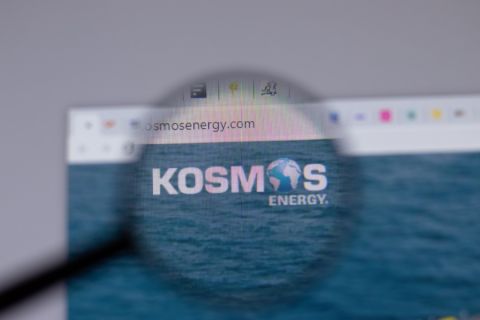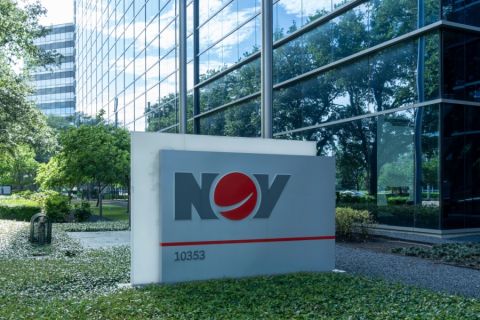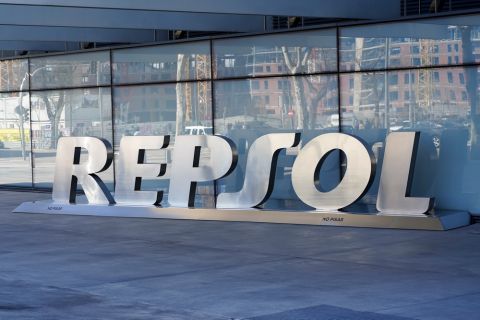
Jean-Paul Desrochers of GSA Energy spoke about the global LNG market at this week's SMi Gas Storage Conference in London. (Photo: Frank Nieto)
As natural gas becomes a more popular energy source in Europe and Asia, the liquefied natural gas (LNG) market has been changing to meet this increased demand with both more supply and import regions opening up.
“LNG markets are in an era of unprecedented change. The traditional LNG market was focused on Asia, primarily Japan and Korea with a little bit going to Europe and North America. Today that has evolved significantly,” said Jean-Paul Desrochers, vice president of GSA Energy Co. at this week’s SMi Gas Storage Conference in London.
There has been an increase in the number of supply markets with Trinidad, the Middle East and Africa bringing on new supplies and new markets opening in Europe, China, India as well as North America.
One of the biggest changes has been the involvement of Middle Eastern nations in the LNG market. Traditionally LNG producers have been able to ship their products into either the Atlantic or Pacific basins. In the case of Qatar and Egypt, they are able to ship LNG to both basins and seek the best-priced market.
“This creates very interesting opportunities, particularly in the current market situation where we are long on LNG,” Desrochers said. This is due to unprecedented growth over the last few years, primarily from Qatar. This has resulted in the delay of other projects’ in-service dates, which he said is expected to continue until the markets come back into balance in 2014-2015.
This unbalanced market is due to not just the additional LNG supply, but also the additional production of natural gas in North America from the shale gas plays, as well as by the general economic downturn.
These changes have resulted in an alteration from the anticipated flow of LNG into markets. The biggest change, of course, is in the amount of LNG that had been expected to enter North America and the amount that actually will and has entered the market.
“Shale gas has not only increased supplies in North America, but lowered the price so it is not attractive for LNG imports, but that supply has got to go somewhere,” he said.
Desrochers pointed out that prior estimates placed LNG imports into North America at 93 billion cubic meters (Bcm) from 2010-2013. This is now expected to be only 53 Bcm. The European and Asian markets are expected to take on the brunt of these supplies with the European estimates increasing from 90 Bcm to 108 Bcm from 2010-2013 and the Asian estimates increasing from 179 Bcm to over 2010 Bcm.
The biggest market increases in Europe are expected to be in the Netherlands, the United Kingdom and France while India and China are expected to increase their market share for imports in Asia.
He noted that while supply is long that North American LNG regasification terminals such as Kitmat in Canada and the Sabine Pass in Louisiana may seek to export LNG from North America and into the Asian and European markets since these markets have higher prices than those found in their home markets.
Northwest Europe has not been able to control prices effectively because of its lack of domestic production as well as limited storage capacity. Despite relatively mild winters over the past several years, withdrawals have increased during the winter due to the increased usage of natural gas in the market.
Desrochers stated there is a connection between the global markets for LNG that hasn’t been in place before with the U.S. operating as a balancing market for the world.
This is because the U.S. price is the flattest in the world aside from some increased seasonal demands. On average the shipping costs for LNG from Qatar to the U.S. are US$1.55 per million Btu higher than to ship the gas to Europe.
In fact, the advantage to ship to Europe is so strong that even summer LNG prices in Europe are higher than North American winter prices. “Assuming you can sell into the U.K., there is no reason to consider shipping into North America,” Desrochers said.
Because of these factors, he noted that it was important for European markets to increase their storage capacity in order to drive efficiency by helping to ensure supplies. The optimal use of storage facilities would be to place them close to both LNG terminals as well as to pipeline interconnections. “Underground storage is only one part of the strategy, as you also need transportation interconnectivity also [to optimize efficiency],” he said.
Until this infrastructure is put in place, Europe will continue to operate with an inefficient gas market that will artificially increase their gas prices. However, as noted earlier in the conference, it is difficult for this infrastructure to be put in place not just because of stringent regulations, but also because of the need for cross-border agreements for transportation infrastructure. Additionally, current economic conditions make it difficult to finance such expensive projects. – Frank Nieto
Recommended Reading
E&P Highlights: April 29, 2024
2024-04-29 - Here’s a roundup of the latest E&P headlines, including a new contract award and drilling technology.
Kosmos Energy’s RBL Increased, Maturity Date Extended
2024-04-29 - Kosmos Energy’s reserve-based lending facility’s size has been increased by about 8% to $1.35 billion from $1.25 billion, with current commitments of approximately $1.2 billion.
NOV Announces $1B Repurchase Program, Ups Dividend
2024-04-28 - NOV expects to increase its quarterly cash dividend on its common stock by 50% to $0.075 per share from $0.05 per share.
Repsol to Drop Marcellus Rig in June
2024-04-28 - Spain’s Repsol plans to drop its Marcellus Shale rig in June and reduce capex in the play due to the current U.S. gas price environment, CEO Josu Jon Imaz told analysts during a quarterly webcast.
Chevron Hunts Upside for Oil Recovery, D&C Savings with Permian Pilots
2024-02-06 - New techniques and technologies being piloted by Chevron in the Permian Basin are improving drilling and completed cycle times. Executives at the California-based major hope to eventually improve overall resource recovery from its shale portfolio.





